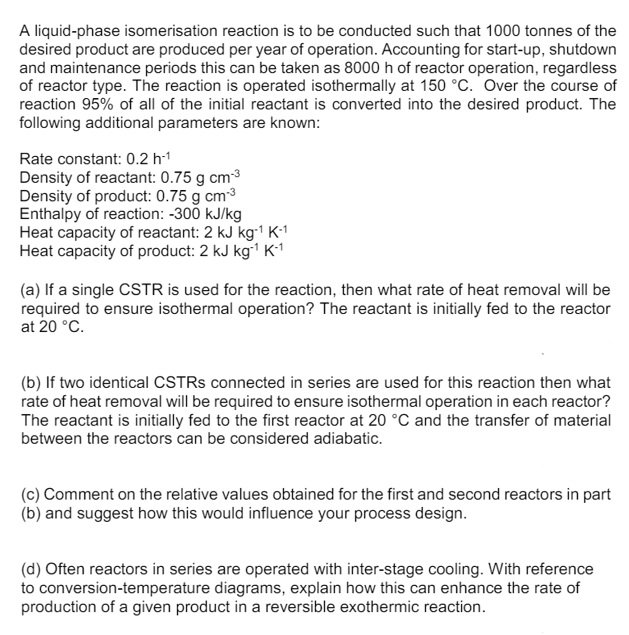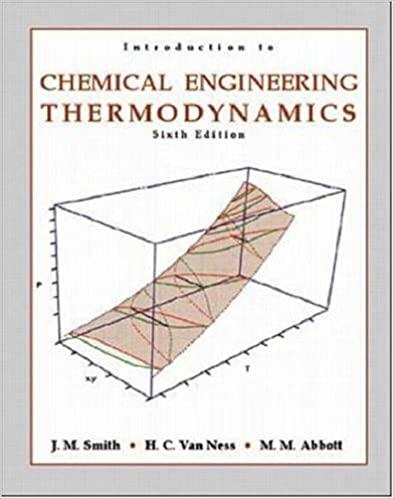Answered step by step
Verified Expert Solution
Question
1 Approved Answer
A liquid - phase isomerisation reaction is to be conducted such that 1 0 0 0 tonnes of the desired product are produced per year
A liquidphase isomerisation reaction is to be conducted such that tonnes of the
desired product are produced per year of operation. Accounting for startup shutdown
and maintenance periods this can be taken as of reactor operation, regardless
of reactor type. The reaction is operated isothermally at Over the course of
reaction of all of the initial reactant is converted into the desired product. The
following additional parameters are known:
Rate constant:
Density of reactant:
Density of product:
Enthalpy of reaction:
Heat capacity of reactant:
Heat capacity of product:
a If a single CSTR is used for the reaction, then what rate of heat removal will be
required to ensure isothermal operation? The reactant is initially fed to the reactor
at
b If two identical CSTRs connected in series are used for this reaction then what
rate of heat removal will be required to ensure isothermal operation in each reactor?
The reactant is initially fed to the first reactor at and the transfer of material
between the reactors can be considered adiabatic.
c Comment on the relative values obtained for the first and second reactors in part
b and suggest how this would influence your process design.
d Often reactors in series are operated with interstage cooling. With reference
to conversiontemperature diagrams, explain how this can enhance the rate of
production of a given product in a reversible exothermic reaction.

Step by Step Solution
There are 3 Steps involved in it
Step: 1

Get Instant Access to Expert-Tailored Solutions
See step-by-step solutions with expert insights and AI powered tools for academic success
Step: 2

Step: 3

Ace Your Homework with AI
Get the answers you need in no time with our AI-driven, step-by-step assistance
Get Started


